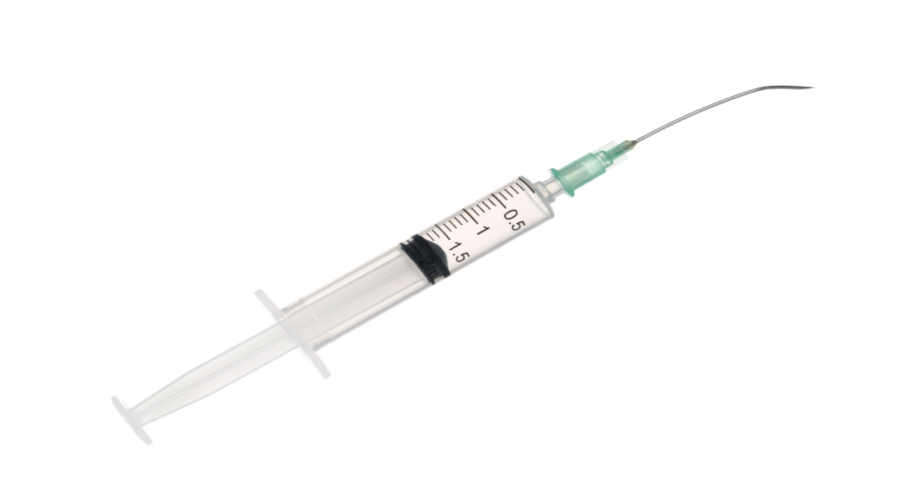Winter is coming — and it’s bringing the flu along with it.
Last year, the flu season was practically non-existent. Mask mandates were in effect across the United States, people were working and studying remotely, and most were practicing physical distancing. All those factors meant that the flu didn’t have an opportunity to spread.
This year, however, masks are a thing of the past in many places, in-person events have resumed, and people are back to the office and school.
Cases of RSV, which is a respiratory virus that mainly affects children, are currently spiking, which could be a preview of what this year’s flu season is going to look like.
“Reduced population immunity due to lack of flu virus activity since March 2020 could result in an early and possibly severe flu season,” the CDC says.
Essentially, because most people “missed out” on the flu last year, the virus could come back with a vengeance this year. People who haven’t had the flu in a few years could find that their natural immunity to influenza has faded over time and experience more robust symptoms this year.
And, in addition to the flu and RSV, there will probably be an increase in other respiratory viruses like adenoviruses, the common cold, rhinoviruses, and more.
The Flu and Covid-19
Even if you are a flu season veteran, the continuing coronavirus pandemic makes this year’s flu season a little different than years past.
Here’s the information you need to know about the flu and Covid-19 to keep your patients safe from both viruses this winter.
Telling the difference
Flu symptoms and Covid-19 symptoms can be similar, but Covid-19 is more likely to cause serious illness than the flu. It also spreads more easily. Symptoms they share, according to the CDC, include:
- Fever/chills
- Caugh
- Shortness of breath
- Fatigue
- Sore throat
- Runny nose
- Muscle pain/body aches
- Headache
- Vomiting or diarrhea
Both can also cause loss of taste and smell, but this symptom is much more common with Covid-19 than it is with the flu.
The best way to tell the difference between the flu and Covid-19 is to get tested. You can offer both flu tests and Covid-19 tests in your pharmacy to help patients figure out the best course of action when they are feeling unwell.
Flu shots and Covid-19 shots
Previously, the CDC recommended not getting the Covid-19 vaccine at the same time as other immunizations, but that guidance has now changed.
If your patients want to get the Covid-19 vaccine and the flu shot at the same time, they can do that. Patients may want to get each shot administered in a different arm to reduce pain and swelling. For patients who are eligible for a Covid-19 booster shot, those can also be administered at the same time as a flu shot.
However, if patients have a suspected or confirmed case of Covid-19, they shouldn’t get the flu shot. Instead, they should continue to self-isolate and get the shot after they have recovered.
Administering vaccines during the pandemic
Because you have to get up close and personal with patients while administering flu shots, you may increase your chances of being exposed to Covid-19. Take these precautions to reduce the chance of Covid-19 transmission while administering flu vaccines:
- Screen for Covid-19 symptoms before patients arrive at the pharmacy if possible, as well as screening for symptoms when they get there
- Use plexiglass or plastic barriers to limit contact where possible
- Require patients over the age of 2 years to wear a face mask
- Clean surfaces and wash hands regularly
- Change gloves between patients
- Wear a face mask at all times, and eye protection based on the level of community transmission
Visit the CDC’s website for a full guide on issuing immunizations during the Covid-19 pandemic.
Promoting the flu shot
The predicted extra-severe flu season doesn’t have to become a reality. If enough people in the community get vaccinated, outbreaks can be prevented. Here’s how you can reach as many people as possible.
Talking to your patients about the flu shot
The flu shot is recommended for everyone ages 6 months and up, so you should be asking every patient that comes into your pharmacy if they have gotten their flu shot yet. The only people who shouldn’t get a flu shot are people who have had a prior severe reaction to the shot.
Pregnant people may be especially nervous about getting an immunization, but they are also recommended to get the shot. If they are in their third trimester, they can confer immunity to their child, which is especially important because babies can’t get vaccinated until they are 6 months old.
To make the most of the immunity the vaccine confers, patients should get vaccinated by the end of October.
Some patients might be willing to take their chances with the flu, but vaccination is especially important this year because many hospitals are already overwhelmed with Covid-19 patients, so it could be harder to find care for a serious case of the flu.
Flu vaccine marketing
Include your flu shots in your pharmacy marketing campaigns so patients know you offer them. Start your marketing efforts now so that patients can get vaccinated before the flu starts to spread in November and December.
You can remind your patients about your immunizations services by:
- Sending text messages
- Emailing reminders
- Automating outbound calls using IVR
- Doing interviews about the flu shot with local TV and radio news
- Hanging signs in-store and at your checkout counter
You can also connect with a larger patient base by reaching out to local employers and doing flu shot clinics on-site.
After the initial marketing push in the fall, continue to let patients know you offer the flu shot throughout the winter. Flu season can last through the spring, and it’s better to be vaccinated late than never.
A Member-Owned Company Serving Independent Pharmacies
PBA Health is dedicated to helping independent pharmacies reach their full potential on the buy-side of their business. Founded and owned by pharmacists, PBA Health serves independent pharmacies with group purchasing services, wholesaler contract negotiations, proprietary purchasing tools, and more.
An HDA member, PBA Health operates its own NABP-accredited secondary wholesaler with more than 6,000 SKUs, including brands, generics, narcotics CII-CV, cold-storage products, and over-the-counter (OTC) products — offering the lowest prices in the secondary market.












